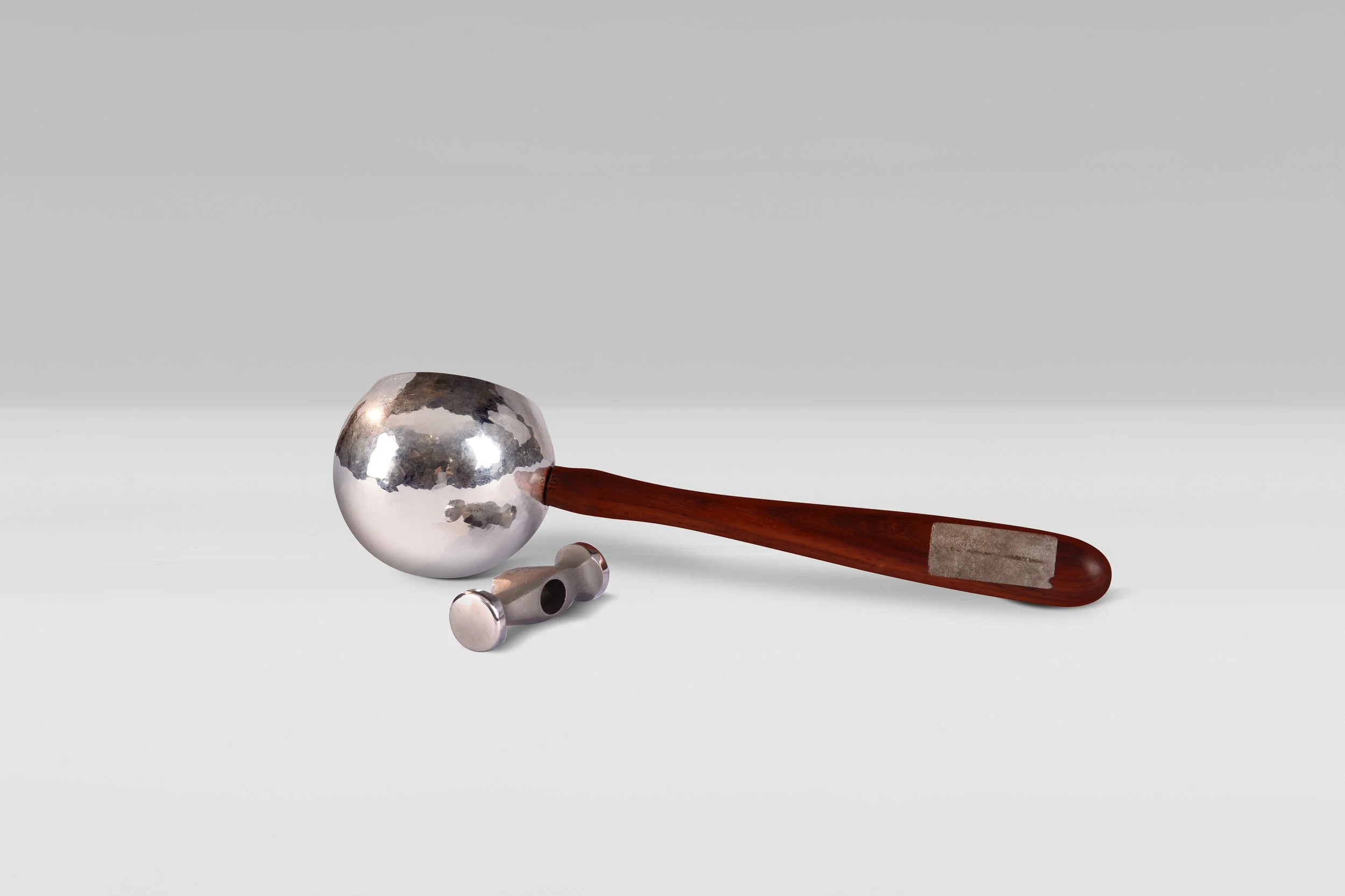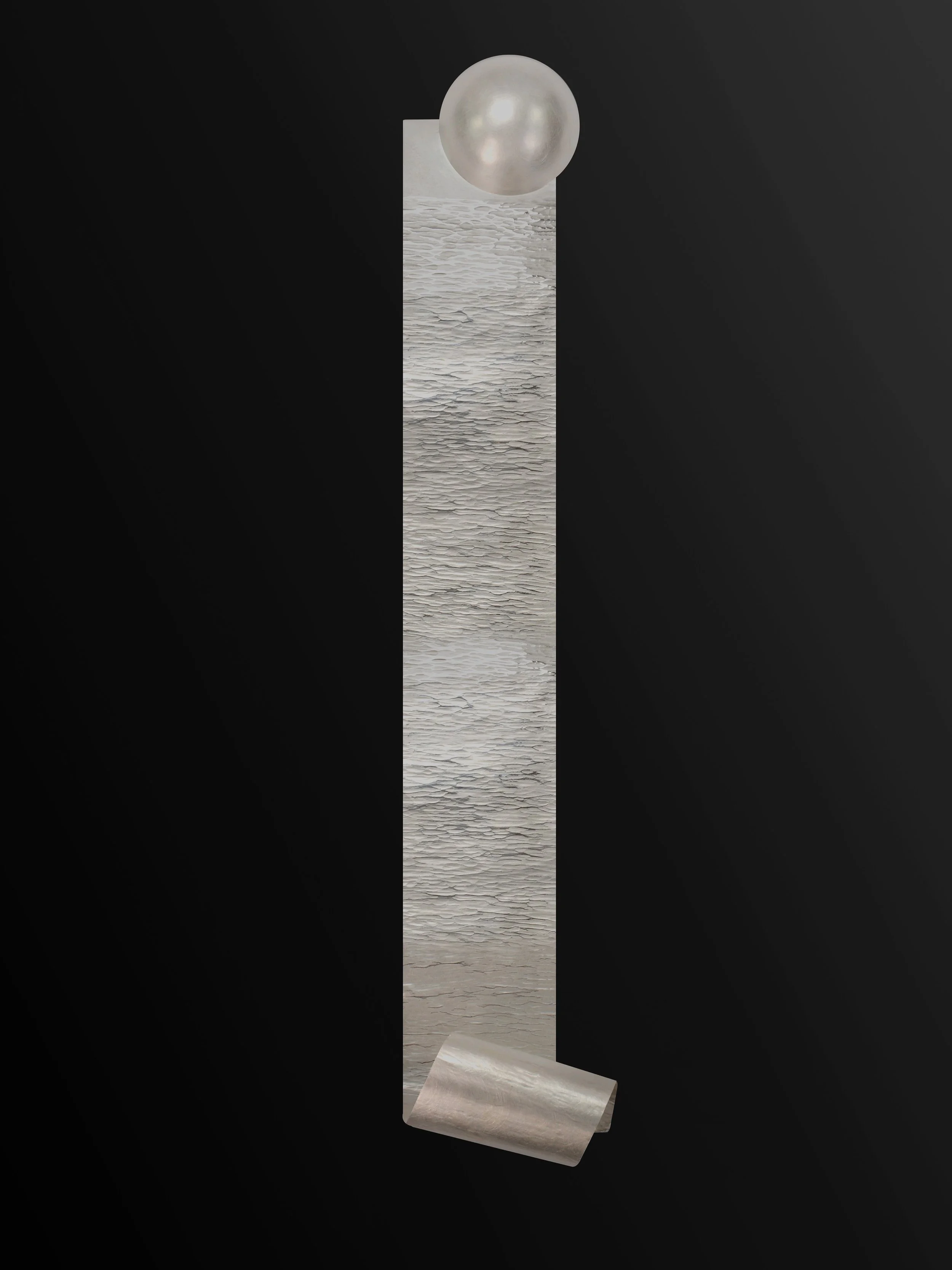TIANYE AN
Cluster Contemporary Jewellery
”The Living Trace”
TIANYE AN @ WORK
“What time when happening”
“Hammer Smith”
Tianye An was born in Northeast China and later moved to Yunnan to study jewelry design. Influenced by the region’s jade culture, he became captivated by the beauty of gemstones and began learning about both product and jewelry design. He then pursued further study at the Royal College of Art in the UK, focusing on jewelry and metalwork. During Goldsmiths’ Fair, he was deeply moved by the silverware of metal artists, silent yet expressive pieces that changed how he perceived metal. Until then, his work had emphasized form and concept, but something shifted. The vessels he encountered, quiet yet resonant, solid yet gentle, broke old boundaries. They embodied both material weight and emotional depth. These works awakened a new awareness, where metal objects are not just things but active participants in a dialogue with their makers. This unexpected encounter gently shifted his focus toward silversmithing, a field he had not fully entered before, but now feels deeply drawn to. He is currently pursuing this path, working with metal and honing his craft as he strives to become a silversmith.
“The language of time'“
Tianye An is a metalsmith and jewellery designer who completed his MA in Jewellery & Metal at the Royal College of Art in 2025. Working primarily with precious metals, he treats material not just as something to shape, but as a way of thinking. His process involves repeated forging, close listening, and attention to subtle technical shifts—focusing on the sensory traces that usually go unnoticed in metalwork.
He describes this as a dialogue with metal: tuning into its “voices,” from the physical sounds of impact to the more elusive, perceptual resonances that can’t always be captured. Alongside this, he writes poetry and reflective text, using language to extend and respond to what emerges at the bench.
Tianye’s practice resists the idea of the finished object as the ultimate goal. Instead, he foregrounds process—inviting viewers to sense, rather than simply see, and to question where making ends and meaning begins.


